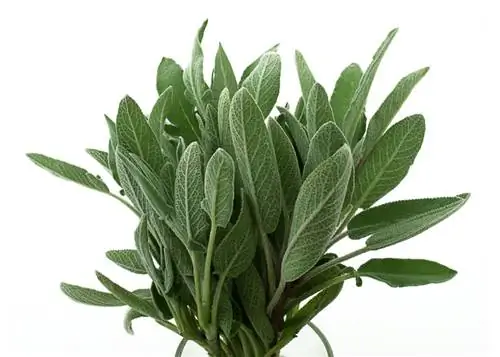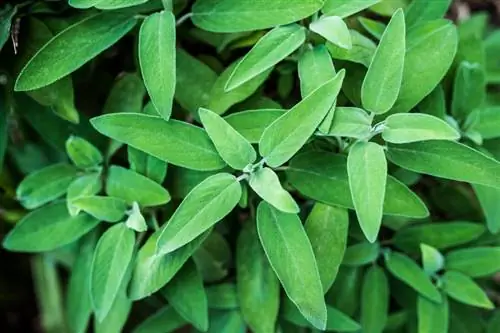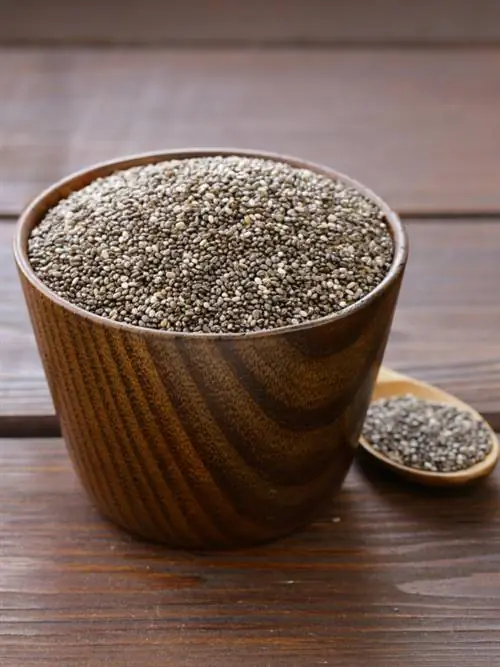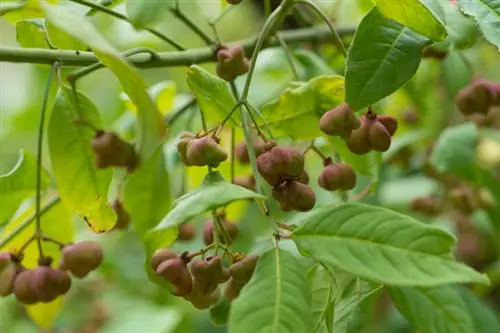- Author admin [email protected].
- Public 2023-12-16 16:46.
- Last modified 2025-01-23 11:20.
Sage scores with a colorful array of possible uses as a culinary herb, medicinal, aromatic and ornamental plant. This spectrum cannot be covered by a single specimen. It's a good thing that the Mediterranean all-rounder is so easy to propagate.

How can I propagate sage?
Sage can be propagated by cuttings, sinkers or sowing. Top cuttings are cut in summer and planted in potting soil. Lowering plants are covered with soil in early summer and root independently. Sowing takes place at the end of March on the windowsill in seed pots.
This is how you can propagate cuttings in no time at all
As an evergreen subshrub, sage is ideal for propagation using cuttings. If the plant is full of sap in summer, this is the best time. How to do it right:
- From July, cut off head cuttings with a length of 6-10 centimeters
- Remove the lower leaves, leaving 2 pairs of leaves
- Fill the cultivation pots with a herbal soil and sand mixture and moisten them
- Insert one cutting at a time so deep that the pairs of leaves can be seen
Place your pupils in an indoor greenhouse (€29.00 on Amazon) or put a transparent hood over them. Within 2-3 weeks, the rooting has progressed to such an extent that the young sage can be planted out in the bed or pot. It is important to note that the substrate must not dry out at any time.
Propagate sage with a sinker - this is how it works
In early summer, select a he althy, vital and non-woody shoot. Pull this to the ground and mark the point of contact. A small furrow is created there and the depression is covered with earth and, if necessary, a stone. The shoot tip protrudes from the soil and is tied to a wooden stick. The steps continue:
- The mother plant feeds the sinker while it roots
- Keep the soil constantly moist without causing waterlogging
- If the tip sprouts again, an independent root system has formed
The growth of new roots is accelerated if you scratch the shoot a little with a razor blade and only then dig it in. At the end, the connection between the mother plant and the offshoot can be separated with a sharp knife cut. When planted in the new location, a vital young sage develops in the same year.
This is how breeding is successful through sowing
To avoid the uncertainties of direct sowing, we recommend sowing sage on the windowsill. This has the advantage that the early young plants start the season with a stable growth lead. How to do it right:
- At the end of March, fill the cultivation pots with peat sand or emaciated herb soil
- Push 1-2 sage seeds into the substrate about 1 centimeter deep into each pot
- Spray with water and place in the heated mini greenhouse
At 18 to 22 degrees Celsius you can look forward to the first seedlings within 7 to 21 days. During this time, keep the substrate slightly moist. In mid-May, plant the young sage in the bed at a distance of 30-40 centimeters.
Tips & Tricks
Can't you get enough of the wonderful sage scent? Then smoke the dried leaves in a warmer or in a fire bowl. Once the blazing flame has turned into a glowing ember, place the food to be smoked.






